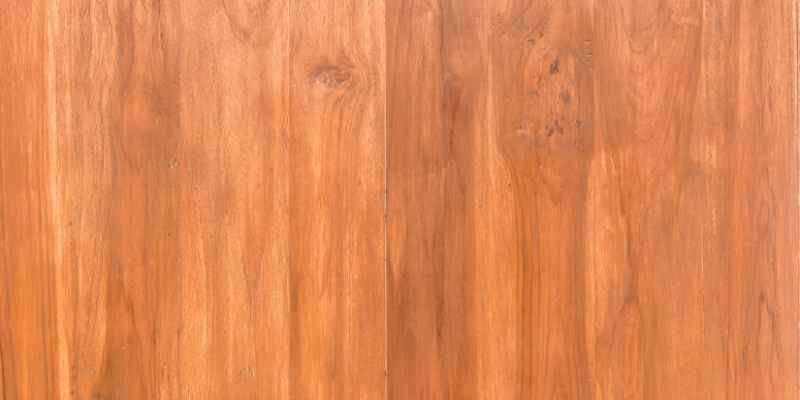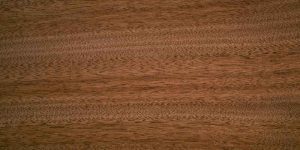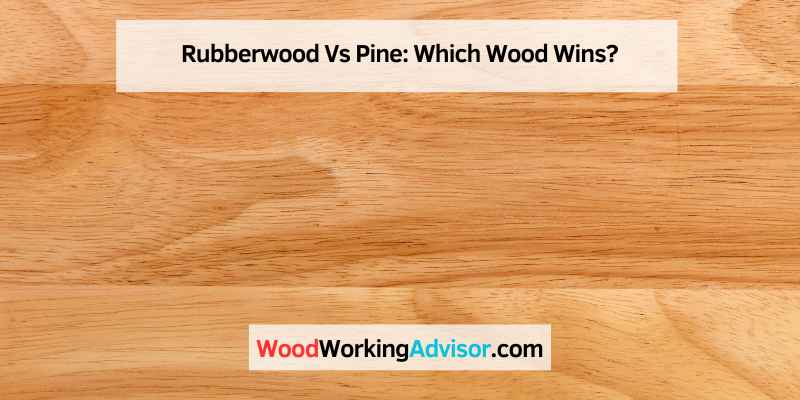Rubberwood is often used for high-quality and durable furniture, while pine is commonly used for budget-friendly or rustic-style furniture. The choice between the two depends on factors such as budget, design preferences, and durability requirements.
Rubberwood provides the perfect balance for durability while also remaining affordable and easy to move because of its medium-density composition. On the other hand, pine is a softwood native to North America and is usually cheaper than rubberwood. When it comes to choosing between the two, it is important to consider the pros and cons of each to make the right choice for your needs.
What Is Rubberwood?
Rubberwood and pine are both popular choices for furniture, but they have distinct differences. Rubberwood is a durable and affordable hardwood, while pine is usually used for budget-friendly or rustic-style furniture. The choice between the two ultimately depends on budget, design preference, and durability requirements.
Description
Rubberwood, also known as Hevea brasiliensis, is a light to medium density hardwood that is commonly used in the manufacturing of furniture pieces, such as tables, chairs, cabinets, and other household items. Unlike pine, rubberwood is a hardwood that comes from the Pará rubber tree. It is considered as one of the most durable woods in the market and is known for its fine-grained texture, which gives it a smooth, polished look.
Durability
When it comes to durability, rubberwood is known for its strength and resistance to wear and tear, which makes it a popular choice among furniture manufacturers. Its medium-density composition makes it a durable option for wood furniture when you’re on a budget. Rubberwood pieces can withstand more physical exertion and are less likely to get dented or scratched than pine pieces.
Cost-effectiveness
Rubberwood furniture is more cost-effective than furniture made of higher-density
, maple, or mahogany. It strikes the perfect balance for durability while also remaining more affordable and easy to move, unlike heavier, higher-density hardwoods. Although it is more expensive than pine, rubberwood provides better value for money in terms of longevity and quality.
In conclusion, while both rubberwood and pine are popular choices when it comes to furniture manufacturing, rubberwood’s finer texture, durability, and cost-effectiveness make it a top choice for those who are looking for high-quality and long-lasting furniture pieces without going over budget.
What Is Pine?
Rubberwood and pine are two of the most popular materials used in furniture making. While rubberwood is known for its durability and high-quality, pine is often used for budget-friendly or rustic-style furniture. Ultimately, the choice between the two comes down to factors such as budget, design preferences, and durability requirements.
Description
Pine is a softwood that grows in various parts of the world. It is a popular choice for furniture, particularly for budget-friendly or rustic-style furniture. Pine is known for its light color and straight grain patterns. The wood has a relatively low density, making it easy to work with and transport.
Durability
While pine is a popular choice for furniture, it may not be the most durable option. The softwood is susceptible to scratches, dents, and other damage. Additionally, pine is not as resistant to moisture and decay as other hardwoods. However, with proper care and maintenance, pine furniture can last for years.
Cost-effectiveness
Pine is a relatively affordable option for wood furniture. Its abundance and ease of access contribute to its cost-effectiveness. Pine furniture can be a good choice for those on a budget or for those looking for a rustic and natural aesthetic. However, if durability is a top priority, investing in a higher-quality hardwood may be a better long-term choice.
In comparison to pine, rubberwood is often considered to be a more durable and higher-quality option for furniture. Rubberwood, also known as plantation hardwood, is a hardwood that is eco-friendly and sustainable. The wood is derived from the rubber tree, which is grown in large plantations around the world.
Rubberwood Vs Pine: Differences
When it comes to selecting wood for furniture, two of the most common options are rubberwood and pine. While both offer a good balance between quality and affordability, there are some key differences that you should consider when deciding between them. In this section, we’ll take a closer look at the differences between rubberwood and pine across four important factors: appearance, durability, strength, and maintenance.
Appearance
Both rubberwood and pine have their own distinctive appearances. Rubberwood has a light color tone with subtle streaks of darker colors, giving it a uniform look. In contrast, pine has more visible knots and wood grains, making it a popular choice for a rustic or vintage look. Pine can also be easily stained or painted to match different styles and colors, while rubberwood has a natural finish that may not be suitable for everyone’s taste.
Durability
When it comes to durability, rubberwood and pine have varying degrees of resistance against wear and tear. Rubberwood is known for its medium-density composition, which gives it good durability without being too heavy or bulky. On the other hand, pine is a softwood that can dent and scratch easily, requiring more maintenance and care to keep it in good condition. However, pine is also less prone to cracking or warping than rubberwood, especially in areas with high humidity.
Strength
The strength of wood is an important factor to consider, especially for furniture pieces that need to withstand weight and pressure. Rubberwood has a higher density than pine, which makes it stronger and more resistant to impact and compression. This makes it a better option for furniture pieces that are used frequently, such as chairs, tables, and sofas. On the other hand, pine is a softer wood that may be prone to bending or breaking over time, especially with heavy use or moving.
Maintenance
Finally, maintenance is an important factor to consider when choosing between rubberwood and pine. Rubberwood requires minimal maintenance and can be easily cleaned with a damp cloth or mild detergent. It also resists insect and fungal attacks, making it ideal for outdoor furniture. Pine, however, needs more care to prevent scratches, stains, and discoloration. It may require regular polishing, waxing, or refinishing to maintain its appearance and protect it from damage.
Choosing between rubberwood and pine ultimately depends on your needs and preferences. While rubberwood offers good durability and strength, pine is a versatile option that can add character and charm to your space. Consider the factors we’ve discussed above to make an informed decision that fits your style and budget.
Advantages And Disadvantages Of Rubberwood

Rubberwood is a durable and affordable option for wood furniture, making it a popular choice when on a budget. However, rubberwood has a porous nature and is susceptible to insects and decay, which are some of its disadvantages when compared to pine.
Ultimately, the choice between the two depends on factors such as budget, design preferences, and durability requirements.
Rubberwood has become increasingly popular, especially in the furniture industry. This has led to countless debates on whether rubberwood is better than other types of wood such as pine. Below are some advantages and disadvantages of rubberwood:
Advantages
1. More durable: Rubberwood has medium-density, which makes it more durable than most types of wood, especially on a budget. This makes it the perfect option for furniture, especially for those who have kids or pets.
2. Sustainable: Rubberwood is the most ecological option for furniture making. It is a sustainable type of wood as it is harvested from rubber trees that no longer produce latex. This makes it an environmentally friendly option.
3. Cost-effective: Rubberwood is an economical option compared to other hardwoods. It is less expensive than maple or oak, making it a budget-friendly alternative.
4. Versatile: Rubberwood can be easily molded into different shapes, making it a great option for various furniture designs.
5. Resistant to fungus: Rubberwood is resistant to fungus and bacteria, making it a great option for humid environments.
Disadvantages
1. Porous nature: Despite the kiln-drying process undergone by rubberwood before being transformed into wood furniture, it still retains its porous nature. This makes it susceptible to damage from moisture and liquids.
2. Insects: Rubberwood can be damaged by insects if not properly treated.
3. Decay and toxicity: Rubberwood has a low resistance level to decay. It is also toxic, especially when ingested, making it unsuitable for kitchen utensils.
4. Warping and chemical reactions: Rubberwood can warp if exposed to extreme conditions such as too much moisture or heat. It can also react with some chemicals, causing ugly stains.
5. Allergies: Rubberwood dust can cause allergies or respiratory issues, making it unsuitable for use in areas with people or pets with respiratory issues.
Conclusion
Rubberwood is a great option for budget-friendly furniture but has its downsides. It is essential to weigh the advantages and disadvantages of rubberwood against your needs before settling for it.
Advantages And Disadvantages Of Pine
Rubberwood is often used for high-quality yet affordable furniture pieces, while pine is more commonly used for budget-friendly or rustic-style furniture. The choice between the two depends on factors such as budget, design preferences, and durability requirements. Both have their advantages and disadvantages, but rubberwood furniture is generally more durable and long-lasting.
Pine is a popular wood used for furniture-making due to its availability and affordability. However, like any material, pine has its advantages and disadvantages. Below are the details.
Advantages
• Affordability: Pine furniture is more affordable than other hardwood options, making it accessible for those on a tight budget.
• Versatility: Pine wood can be stained or painted in various colors, making it a versatile option for various furniture styles.
• Lightweight: Pine is a lightweight wood, making it easy to move around.
Disadvantages
• Softness: Pine wood is relatively soft, making it prone to dents and scratches.
• Durability: Although it can last for years, pine furniture may not be as durable as hardwood options such as oak or maple.
• Susceptible to Warping: Pine wood is susceptible to warping when exposed to moisture or humidity.
When it comes to choosing between rubberwood and pine, it’s vital to consider the advantages and disadvantages of each material. Rubberwood is often used for high-quality, durable furniture pieces, while pine is more commonly used for budget-friendly or rustic-style furniture. Ultimately, the choice between the two depends on factors such as budget, design preferences, and durability requirements.
Which Wood Should You Choose?
Rubberwood and pine are two popular choices for wood furniture. Rubberwood is more durable and higher quality, but also more expensive, while pine is budget-friendly and often used for rustic designs. Your choice between the two largely depends on your budget and design preferences.
When it comes to furniture shopping, choosing the right wood can be overwhelming. Two popular options on the market are rubberwood and pine. If you’re trying to decide which one to choose, there are a few factors to consider.
Factors To Consider
Budget
One of the most significant factors to consider is your budget. Pine is often more affordable than rubberwood, making it an excellent option for those on a tight budget.
Purpose of Use
Another consideration is the purpose of the furniture. Rubberwood is often used for high-quality, durable furniture pieces, while pine is more commonly used for budget-friendly or rustic-style furniture. If you’re looking for furniture that will last for years, then rubberwood may be the better choice for you.
Budget
When it comes to cost, pine is often the more affordable option. This is because pine is a softwood and grows quickly, making it more widely available. Rubberwood, on the other hand, is a hardwood obtained from the Pará rubber tree, making it more expensive.
If you’re on a tight budget, then pine may be the better option. However, if you’re willing to spend a little more for a durable piece of furniture, then rubberwood may be the way to go.
Purpose Of Use
The purpose of the furniture is another factor to consider. Rubberwood is often used for high-quality, durable furniture pieces, while pine is more commonly used for budget-friendly or rustic-style furniture.
If you’re looking for a piece of furniture that will last for years, then rubberwood may be the better choice for you. It’s durable and can withstand wear and tear over time. Pine, on the other hand, may not last as long, but it’s a great option for those looking for a budget-friendly piece of furniture.
In Conclusion
When it comes to deciding between rubberwood and pine, it ultimately depends on your budget and the purpose of the furniture. If you’re looking for durability, then rubberwood is the better option. If you’re on a tight budget, then pine may be the way to go. Regardless of your choice, make sure to take care of your furniture to ensure it lasts for years to come.

Frequently Asked Questions Of Rubberwood Vs Pine
Is Rubberwood Good Quality?
Rubberwood is a good quality option for wood furniture on a budget. It is a medium-density hardwood that strikes a balance between durability and affordability, making it easy to move. Although rubberwood is porous and prone to insect damage, it is used for high-quality, durable furniture pieces.
On the other hand, pine is used more commonly for budget-friendly or rustic-style furniture. The choice between the two depends on budget, design preferences, and durability requirements.
What Are The Disadvantages Of Rubber Wood Furniture?
The disadvantages of rubber wood furniture include its porous nature, which makes it susceptible to moisture and insect damage, decay, warping, and chemical reactions. Additionally, rubber wood furniture may cause allergic reactions. However, its medium-density composition makes it affordable and durable.
It is difficult to compare rubber wood to pine as rubber wood is imported as moderately priced indoor furniture, while pine is a native wood often used for budget-friendly or rustic-style furniture.
What Wood Is Rubberwood Similar To?
Rubberwood is similar to maple wood. It is a medium-density tropical hardwood, perfect for durable and affordable furniture. Pine, on the other hand, is mostly used for budget-friendly or rustic-style furniture. The choice between the two depends on budget, design preferences, and durability requirements.
Is Rubber Wood A Hardwood Or Softwood?
Rubberwood is a hardwood obtained from the Pará rubber tree. Its medium-density composition makes it a durable option for wood furniture, striking a balance between durability and affordability. Therefore, rubberwood is considered a hardwood.
Conclusion
To conclude, rubberwood and pine are both suitable materials for furniture, but each has its own strengths and weaknesses. Rubberwood is known for its durability and affordability, making it a popular choice for high-quality furniture. Meanwhile, pine is often used for budget-friendly or rustic-style pieces.
Ultimately, the choice between the two depends on your budget, design preference, and durability requirements. Whichever material you choose, make sure to weigh the pros and cons carefully to ensure that you make the best choice for your needs.


